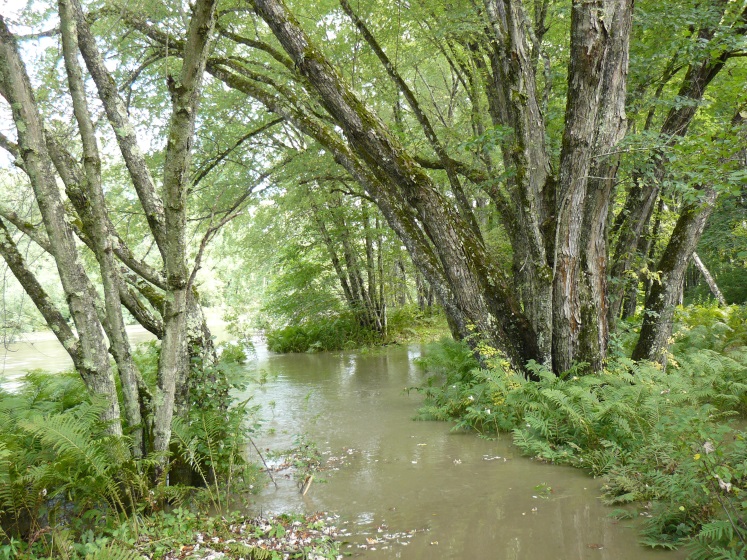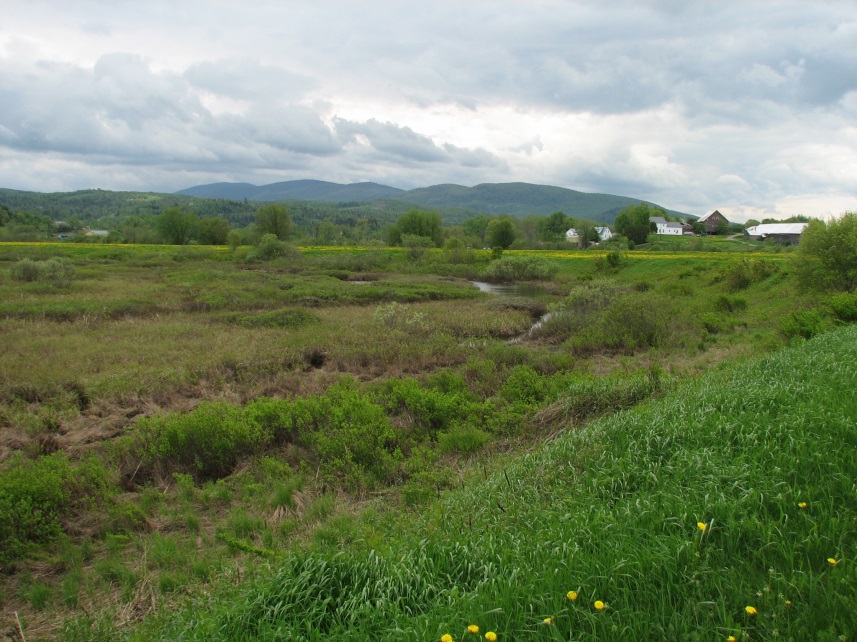Johnson Farm Conservation Project
The conservation project began when Bill and Ursula Johnson, who owned and operated a large dairy farm for more than 30 years along the Connecticut River in Canaan and Lemington, contacted the Vermont Land Trust to discuss transitioning out of ownership. The Vermont Land Trust, recognizing the diversity on the farm, partnered with The Nature Conservancy to determine a plan for the conservation of the 849 acres and more than 6 miles of frontage along the Connecticut River. As the project evolved, the Vermont Fish and Wildlife Department was brought in to be the long-term owner of a portion of the farm. The Vermont Land Trust did a request for proposals to find a long-term farm owner and in the end, Cy and Andrea Nelson purchased 583 acres of the farm. The remaining 266 went to the Vermont Fish and Wildlife Department and are now the Johnson Farm Wildlife Management Area. The majority of the ecologically-significant lands went to the Department, while the rich farmlands went to the Nelson's. Recognizing that it was impossible to cleanly divide up the natural habitats from the farmlands, the WMA and the farm have protections in place through easements and leases to reciprocate both protections on the farm, as well as farm access on the WMA.
Canaan, Lemington
Agricultural Land, Forest Land, Funding, Inventory, Land Management, Land Protection, partnerships, Walks and Talks, water, wetland, wildlife
This project helped conserve a significant amount of farmland. This project also conserved critical habitat (wetlands, oxbow ponds, and floodplain forests) for a variety of birds, waterfowl, and other wildlife. Public access is guaranteed across all of the lands. Primitive campsites along the river for paddlers will further the recreational opportunities available on the Wildlife Management Area.
The Nature Conservancy
The Vermont Fish and Wildlife Department
Vermont Land Trust
New Hampshire Charitable Foundation
Department of Environmental Conservation
Vermont Housing and Conservation Board
All of the partners associated with this project (The Nature Conservancy, The Vermont Fish and Wildlife Department, and Vermont Land Trust) were crucial because this property was very diverse in terms of land use so in order to realize success, multiple strategies had to be implemented from public ownership to a farm easement. In order to determine what should happen where, many inventories were needed. . Funding provided by New Hampshire Charitable Foundation's Upper Connecticut River Mitigation and Enhancement Fund and The Agency of Natural Resources Department of Environmental Conservation Ecosystem Restoration Grant Program were critical grants needed to fund the conservation deal. Lastly, the patience of the Johnsons' was critical as this conservation easement took years to complete.
The challenges associated with this project were inflated due to the scale of the project and the various competing interests involved. One of the greatest difficulties encountered in this project was deciding how much land should be kept as farmland versus how much should be kept as natural area.

